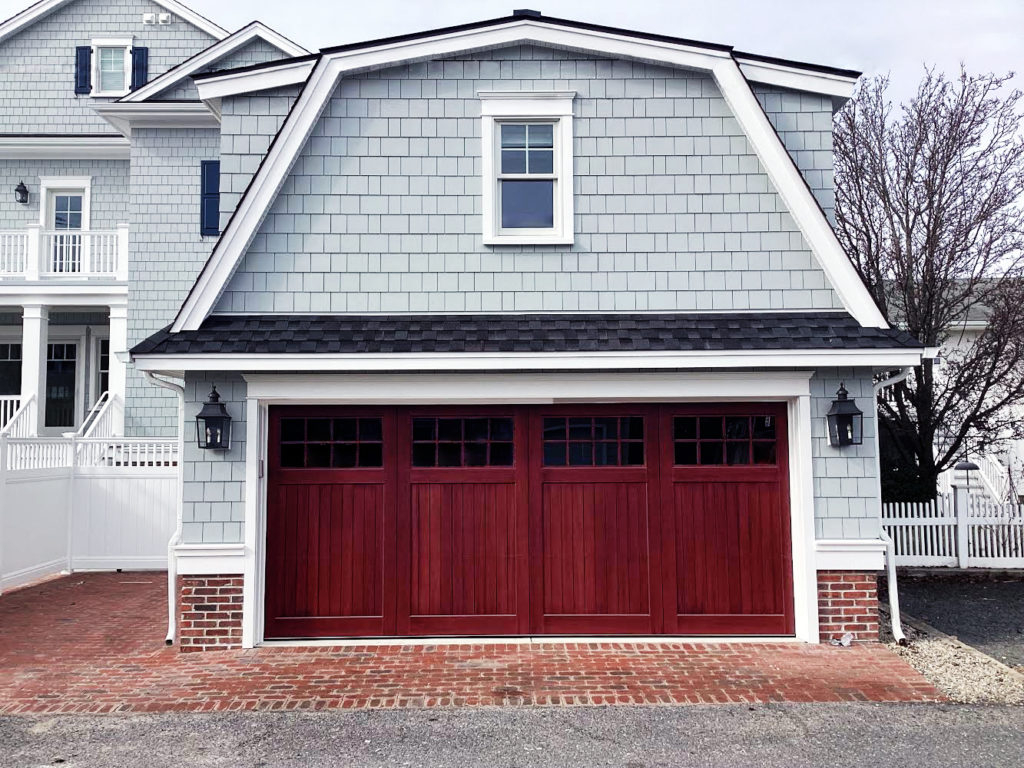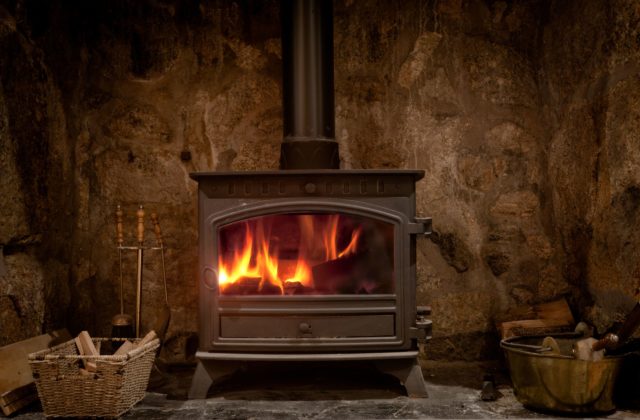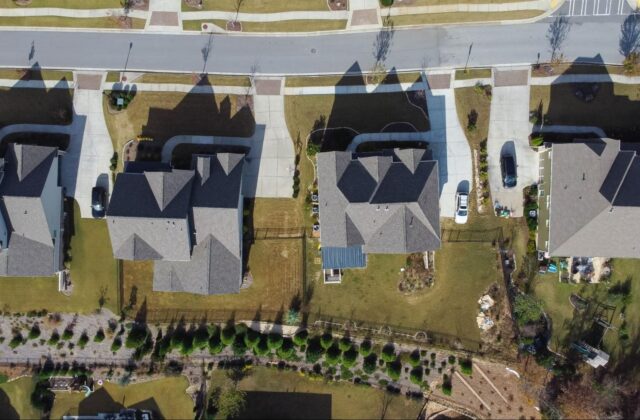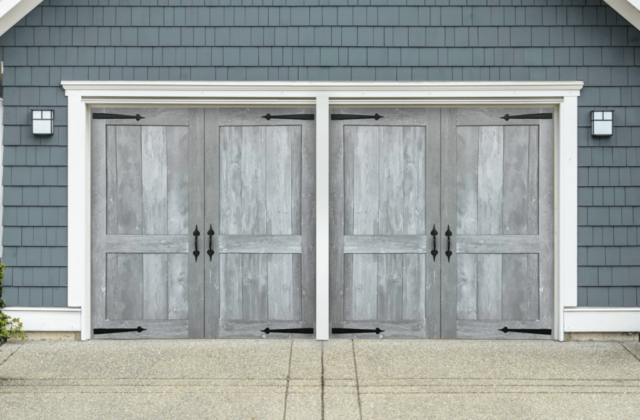Your garage area is one of the most unique spaces in your home. For a majority of your home, your rooms are only leading to other interior spaces. However, a garage door leads you to the outside, so it needs a specific type of care to ensure maximum efficiency.
There are a lot of different ways to ensure your garage is energy efficient. The biggest way is through insulation. In this guide, we’ll outline 5 tips for insulating your garage that will help you become more environmentally friendly, and save on monthly utility bills.
#1. Seal the Cracks & Openings
There are a lot of little cracks and openings in your garage space. Whether that’s on your floor, through your garage door, or your windows, all these areas can allow air to get into your home and cause it to be less energy efficient.
When these areas aren’t properly maintained, you’ll let hot air inside your home during the summer and cold air inside during the winter. The result is you have to crank your air conditioning or heat to control the temperature within your garage and home.
Windows
There are many reasons to have windows incorporated into your garage door design, or built into your garage walls. Naturally, windows are less insulated than wood or siding. However, specialty glass windows have some insulation and can obscure people’s view into your garage.
Over time, these windows can obtain cracks around the frame which allow air and energy to escape.
As a routine maintenance task, we recommend caulking your windows to seal the frames and ensure there isn’t air flowing through any cracks. You should apply the caulk to both the interior and exterior of the window frame.
If this is a task you can regularly maintain and check, you should notice your windows are better insulated and more energy-efficient.
Garage Doors
Whether you upgrade to an energy-efficient garage door or not, our garage experts recommend ensuring the seal around your doors is in optimal condition.
All Artisan doors feature flexible and long-lasting Q-LON weather seals that prevent drafts and water from entering your garage. This helps to keep your garage interior insulated and dry.
The flexibility of your garage door weather stripping seals is extremely important. Flexibility ensures a proper seal between garage doors, tracks, and flooring.
Floor Cracks
There may be seal cracks in your garage floor that cause air to flow through the space. When these openings aren’t properly sealed, exterior air can more easily come into the space. Just like your garage door and the windows, these cracks can increase your utility bills.
If your garage is attached to your home, this hot or cold air can make adjacent rooms hot or cold as well. This may force you to pump the heat constantly throughout the winter season. If water also happens to get into the cracks, it may freeze and expand, causing other garage flooring issues and headaches.
By sealing the floor cracks, you seal out any extreme temperatures, helping to keep the internal garage temperature fairly consistent.
After the cracks are sealed, you can also add parking mats to help soak up any moisture you or your car may bring in from the rain and snow. Not only can mats be a visually appealing addition to your garage floor, but their absorbent properties help to prevent future concrete floor cracks and deterioration.
#2. Improve Your Garage’s Ventilation
Although including ventilation in your garage space isn’t a legal requirement, these improvements are only going to make your garage more energy-efficient. With better ventilation, you’re also reducing the toxic fumes, such as carbon monoxide in your garage.
Windows are a great way to better ventilate your garage and add an aesthetic appeal to the space. If you don’t have windows, you can also install an exhaust fan or floor fan.
#3. Clean Out Non-Essentials
This next energy-saving tip goes hand-in-hand with improving your garage’s ventilation system. By decluttering your garage, you help increase airflow and ventilation in the room.
You should do an inventory of what’s in your garage space and take note if you’re actively using it. A significant example is if you have a fridge or freezer in your garage. These appliances require a lot of energy to continue to run, and if you’re not using them, you’re worsening the efficiency of your home.
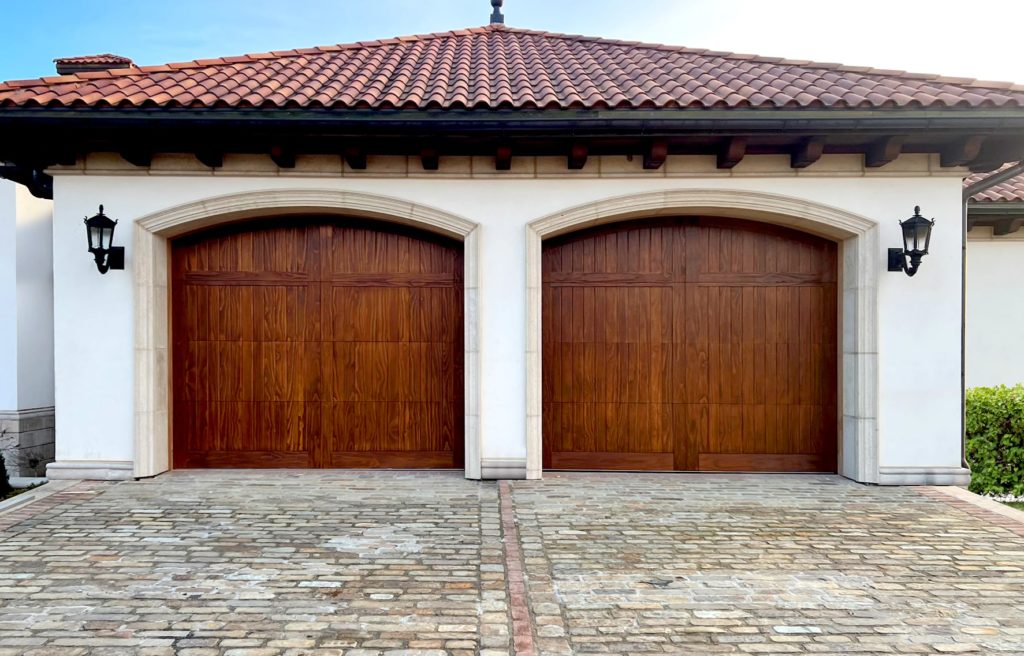
#4. Add Energy-Efficient Features to Your Garage
The tips below are going to help you achieve an energy-efficient garage. We’ll go through ways to make your lighting, thermostat, and garage door more sustainable.
Lighting
While they have a higher up-front cost, energy-efficient garage lighting can last up to 25 times longer than standard lightbulbs while consuming up to 80% less energy. For additional help in choosing from the vast amount of garage lighting options, we recommend using House & Beyond’s garage lighting buying guide.
Thermostat
By including different smart technologies in your garage, you can be aware of what’s going on even when you’re not around. A smart thermostat helps you know the temperature of your garage and helps you save on heating and cooling costs.
Garage Door
If you’re ready to purchase new garage doors, consider customizing them to ensure they’re both attractive for curb appeal and energy efficient. At Artisan, our TimberLife series is our most energy-efficient garage door and comes in a variety of designs.
These doors are made from Tricoya and Accoya wood, which makes them very durable and resistant to moisture. The production of this wood is also more sustainable than other types and is fully biodegradable so it can be recycled or repurposed.
#5. Insulate Your Garage Walls, Floor, and Door
One of the best ways to save energy in your home is to have insulated garage walls, floors, and a garage door. Below, we’ll outline different areas in your garage and how you can save energy and money, through insulating each area.
Walls
Some homes, especially older ones, weren’t built with garage insulation in mind. Many only have siding, radiant sheathing, and a layer of particle board between the inside and outside of your garage.
By insulating the walls, you can create more protection from the outdoor elements, helping to maintain a more consistent temperature inside. There are many options when it comes to choosing the best garage wall insulation. A few of these options include:
- Cotton-Fiberglass Batt Insulation — This type is relatively inexpensive and easy to install. However, to thoroughly insulate your garage, you must wall it up well with either foam board or drywall.
- Cellulose / Blown-In Insulation — If drywall is already in place in your garage but it’s not insulated, you can open a hole in the wall and have a contractor add blown-in insulation between the structural foundation and the drywall.
- Spray or Injection Foam Insulation — Spray foam is applied to open walls and ceilings, while injection foam is applied to enclosed cavities much like cellulose / blown-in insulation. Both spray and injection foam insulation are generally the most expensive option when it comes to garage wall insulation. However, they eliminate most, if not all, air passages through your garage walls. This makes foam insulation one of the best choices for energy efficiency.
Floors
Insulating a garage floor gives you flexibility and makes it more comfortable to do what you want in the space. You have quite a few options when it comes to garage flooring, and there are different levels of insulation to choose from.
Just like when you’re looking to insulate your garage door, the level of insulation will depend on your climate and the purpose of the space. If you’re going to be using your garage area for storage, you likely just want to insulate your flooring enough to make sure you’re not wasting energy.
However, if you’re using your garage space as an extra living room, creative studio, or kid’s playroom, you may want to consider a higher insulating floor. Insulating a garage floor can be a do-it-yourself project, or you can bring in a professional.
Doors
Your garage door is one of the biggest openings of your home, so if it’s not properly insulated, your heating and cooling costs are going to drastically fluctuate based on the weather. If you’re noticing outlandish utility costs, your garage door might be the culprit.
When looking for a new garage entry door, take note of the R-value of the door. This number helps indicate the level of insulation. The higher the R-value, the more energy-efficient the garage door is.
The best types of insulated garage doors have high R-values and use sustainable materials that are more durable and resistant to moisture.
Added Benefits to an Energy-Efficient Garage
- Save on Your Utility Bills. If you take the steps to follow the tips for insulating your garage, you’ll notice your monthly utility costs are more controlled. You should have a better idea of how much each bill will cost because there isn’t excess air coming in and out of your garage.
- Added Home Value. If and when it’s time for you to sell your house, having these additional features in your garage will add value. Because of the great benefits of an energy-efficient home, it is a high selling point for potential buyers.
- Increased Protection of Your Valuables. If you store family memorabilia, luxury cars, or older antiques, it’s important to have a controlled temperature inside your garage so these possessions don’t get ruined.
- Get Some Tax Benefits. In some instances, there are tax benefits for homes that are energy-efficient and incorporate eco-friendly elements.
